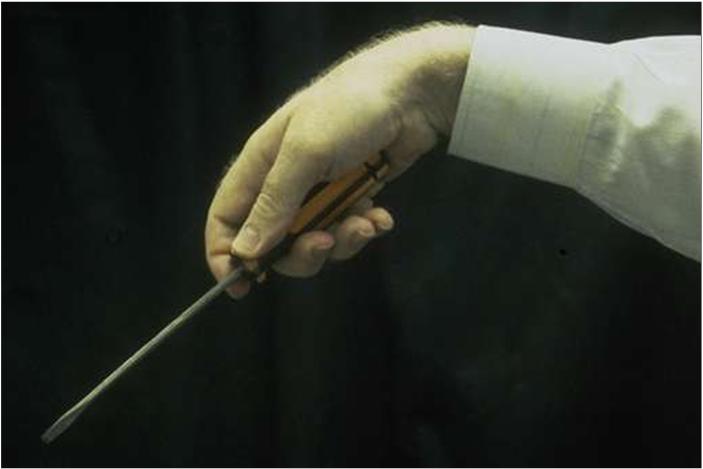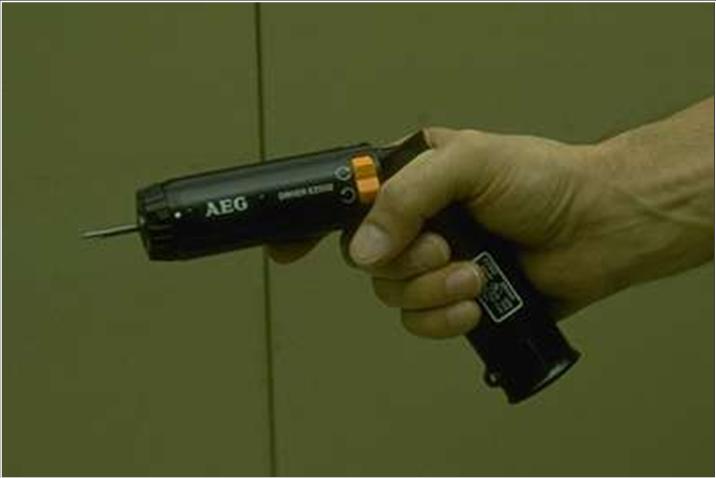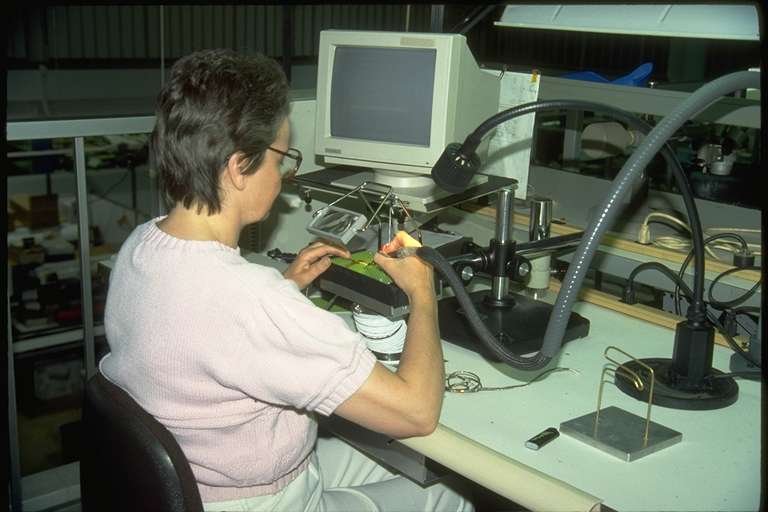 |
|
|
Download as PDF file for your use
and click
here for a longer version of this document
25
Ways Ergonomics Can Save You Money
Dan MacLeod CPE
www.danmacleod.com
March 3, 2006
Ergonomics has gained visibility in recent years because of its
value in preventing Musculoskeletal Disorders (MSDs). However,
the tools of ergonomics can beneift employers in many additional
ways.
This paper is a summary of Part I of
The Ergonomics
Kit for General Industry,
Second Edition,
(Taylor & Francis, 2006). Supporting documentation is provided in
the book. You can use this information in two ways:
-
You
can print out and distribute the PDF file to help show the
financial value of good ergonomics.
-
Background information on this page provides a
testimonial on Dan's capabilities and how he can support your
organization.
- - -
-
Dramatic reductions in workers’ compensation costs.
Good
ergonomics programs have cut workers comp costs an average of 60% and
up to 90% in some cases. You don’t need to accept high workers comp
losses as a cost of doing business.
This graph above shows workers’ comp cost data
for a division of a major U.S. manufacturer in cents per hour per
employee, plus equivalent data for the industry. The graph shows that
the division had costs that were initially lower but rising faster
than the industry average. After the division started the ergonomics
program, its costs dropped while the rest of the industry continued to
rise. After three years the savings was $0.25 per hour per employee!
Dan
conducted the training on site in one of the facilities. The
Ergo Teams from the other facilities in the division attended this
four-day session.
-
Improved productivity. It is common for ergonomic
improvements to increase productivity 10 – 15%. In fact, one of
the more rigorous studies showed a 25% increase in output at computer
workstations when using ergonomic furniture, while concurrently
improving employee well-being.
The
example in the above graph is from from a printing facility where an
ergonomics task improvement increased productivity 300%,
while simultaneously reducing physical demands on employees.
Details are in the book. Dan suggested this particular idea
while making a walkthrough evaluation of the facility.
-
Fewer mistakes and less scrap.
People
working in awkward and uncomfortable postures are not in a position
to do their jobs right the first time. Mistakes are more common.
The graph above shows an example
where a $400 mechanical device eliminated a $6000 annual loss in
scrap, which was caused by employees simply not being able to perform
a tedious, physically demanding task properly all the time. That’s a
1500% return-on-investment in one year because of good ergonomics.
Dan
conducted the training sessions for the plant engineer and manager who
developed the device.
-
Improved efficiency with better working posture.
Working
in awkward postures can directly reduce efficiency in three ways that
ergonomics can help remedy:
-
Reduced strength — Think of
bending at the waist and reaching out across a large object and
then trying to exert. You have little or no strength in an
outstretched position like this. Consequently it takes you longer
to complete a task than it would be if you were working in a proper
position.
-
Less accuracy in your motions — Again, think of reaching out
across a large object and trying to do something intricate. You make
a lot of mistakes and it takes a lot longer time, if indeed you can do
it at all.
-
Faster fatigue — When you
work in an awkward posture, you tire much more easily, which slows
you down.
This
photo shows a fiberglass lay-up operation. The "before"
situation at left involved a long reach that made it difficult to do
their jobs well. The reject rates on these large products
approached 100%, plus the bending had caused a number of back
injuries. Dan suggest placing the part on an upright trunnion,
which solved both problems.
-
Improved efficiency with less exertion.
In general, the more
exertion it takes to perform a task, the longer it takes.
Moreover, muscles under a heavy load are harder to move with
precision. Thus accuracy of movement is reduced, which has
consequences for both quality and efficiency. As with everything
else in this list, the tools of ergonomics can help to identify
sources of unnecessary exertion as well as ways to reduce the
exertion.
Pushing a heavy cart with small
wheels over a rough floor takes more time than pushing the same load
in a cart with large wheels, good grips, and a smooth floor.
-
Improved efficiency with fewer motions.
Repetitive motions are
a waste of time . . . literally. The more motions, the longer it
takes to perform a task. A good ergonomics analysis seeks to identify
the types of motions required for different steps of the job. With
such focus, it is possible to identify instances where it is possible
to improve the type of motion being used or reduce the number of
motions, if not eliminate them entirely. Repetitive motions should be
viewed both as a source of injuries and as a red flag for wasteful
work.


Power
tools provide a common, traditional way of reducing motions. We
like using power tools because they are faster and usually easier on
your hands and arms than manual tools. They're good ergonomics
in action.
-
Improved efficiency with better heights and reaches.
Poor
heights and reaches can affect productivity in a couple of different
ways. If you can’t reach an object at all, you may need to stop
productive work and fetch a step stool or take time to remove an
obstruction. If the inappropriate height or the long reach causes you
to work in an awkward posture, you end up losing productivity for that
reason.
The photo above right shows a 6' 6"
employee at an adjustable height workbench that Dan and the facility
engineer created from a modified die cart. Before he had to
work bent over and was suffering from constant back pain, plus he kept
hitting his head on the light.
-
Less
fatigue.
The efficiency experts of a century ago understood that there is a direct link
between fatigue and lost productivity, but the concept needs to be re-emphasized today. One of the
core areas of ergonomics is understanding the causes of excessive
fatigue and ways to effectively reduce or eliminate these causes. An
example is fatigue caused by working in static positions, a problem
that has increased in recent decades.
Simple things like footrests can
reduce leg fatigue. The photo above shows a turkey processing
employee doing the best she can given the circumstances.
-
Reduced maintenance downtime. All the tools and techniques of
workplace ergonomics can be applied to maintenance tasks. You can
eliminate barriers and thus speed the time in which operations can be
brought back on line. It’s about providing clearance, reducing
exertion, and reducing motions.
This photo shows the classical
maintenance working position: on his back in a confined area with his
arms raised. Often it takes considerably more time to get
access to something than to actually fix it.
-
Identifying waste. A good ergonomics task analysis penetrates
into operations step by step, very similar to old-fashioned Time and
Motion analysis. By evaluating items such as fatigue, motions, and
exertion through a task step by step, it is possible to identify
wasted activities.
Dan
performed a quantitative analysis in this service company to
demonstrate the waste associated with steps B and C of this operation.
About 1/3 of the cycle time and most of the risk for injury was
related to what was essentially double handling.
-
Fresh insights on your operations.
Almost
any new perspective on your workplace can help you identify ways to
improve. But the tools of ergonomics are especially useful because
they focus on ways to eliminate problems like fatigue, awkward working
positions, and excessive motions.
Supervisors at this facility walked right by tasks like this every day
and didn't see them. They were so used to their operations, that
many things were "invisible."
-
Protecting your human resources.
The
smaller your organization, the greater risk you have of disruption due
to the loss of a key person — even if this loss is just a few days
because of back pain. Furthermore, you may not be able to
replace that person, even temporarily. Even if a replacement is
found, skill levels may not be the same or the learning curve may be
extended.
Losing key people to
injuries can be costly in several ways.
-
Ergonomics can offset the limitations an aging workforce.
Older
employees have more experience, tend to be more reliable, and are
already trained and educated. When ergonomic adaptations are made,
older workers can be as productive as younger workers, if not more so.
Failure
to adapt tasks and equipment for older employees can squander the
skills and experience they have gained.
-
Reduced turnover.
Dissatisfaction caused by fatigue, working in uncomfortable postures,
and the pain and discomfort created by overexertion injuries may
easily lead to increased employee turnover.
Pain and discomfort
can lead to unnecessary turnover.
-
Reduced absenteeism.
One reason why workers are absent is that they are experiencing early
stages of a musculoskeletal disorder. Work that hurts doesn’t exactly
encourage people to come ever day.
This
laboratory technician had to work in this hunched-over posture for
extended periods of time.
-
Improved morale.
Frustration, aches, and pains, caused by inadequately designed
equipment can easily affect morale. Often it is the little things
that create dissatisfaction, for example the hard edge on a piece of
equipment that the employee continually bumps into and no one will
fix. These are the kinds of issues that can emerge with a focus on
ergonomics and can often be resolved relatively cheaply.
Good ergonomics makes
for happy employees.
-
Promoting employee involvement. Ergonomics fits well into
current efforts to involve and empower people. If you have never
established formal mechanisms to involve employees, focusing on
ergonomics is a good place to start. The concepts are relatively
simple and result in direct benefit to the employees themselves, which
both serves as positive reinforcement for contributing ideas and
provides a base for expanding to other issues.
Ergonomics provides a good way to involve people.
-
Improved labor relations.
Ergonomics issues are often good ones for joint problem-solving
between management and labor. Redesigning the workplace using the
principles of ergonomics is a “win-win” situation for management and
labor.
Dan was
directly involved in setting up the first joint labor-management
safety programs in the 1970s and witnessed first-hand the profound
changes and benefits that can result. Subsequently, he worked in
other industries and companies to achieve similar results.
-
The rebirth of Methods Engineering.
Much of industrial ergonomics is similar to old-fashioned Methods
Engineering, a practice neglected in recent decades. Perhaps because
of our fascination with high tech developments we have forgotten some
of the basics. Ergonomics brings these techniques back into the
workplace in a new and improved format.
-
Ergonomics can optimize the Lean Process.
Whenever humans are involved, using the tools of ergonomics is a
prerequisite for lean operations. You cannot do lean well
without ergonomics.
-
40,000 years of progress.
In a
certain way, ergonomics is nothing new. Humans have been doing
“ergonomics” for a long time (that is, reducing the physical demands
of jobs). We can say, tongue-in-cheek, that good ergonomic
improvements include the stone ax, the wheel, and even sliced bread.
The
two-handled scythe is a good example of 19th Century ergonomics.
It was easier on the human and easier to cut more wheat.
-
Improving the human-system interface.
The term ergonomics was coined by aircraft
designers for the British Royal Air Force in the Second World War.
Their goal was to create a cockpit that was more human compatible, so
that the pilots could physically reach all the knobs and switches as
well as understand the increasingly complex array of dials and
indicators. Their objectives had nothing to do with preventing back
injuries or Carpal Tunnel Syndrome.
In its
modern format, the birth of ergonomics was all about efficiency, using
the special focus of studying the interface between humans and systems
(or, to use the jargon of the time, “man-machine” systems).
-
The goal of
ergonomics is to make things more human compatible,
which can
bring about multiple ways of saving money. In the workplace, the focus
is on improving tools, equipment, and work methods. The formal
definition of the field is “optimizing the interface between humans
and systems.”
Incompatibility between humans and equipment — like the lack of knee
clearance in this photo — leads to multiple inefficiencies.
-
Everyone benefits from knowing the “rules of work.”
The term
ergonomics was coined from the Greek words ergon (meaning
“work”) and nomos (meaning “rules”). So the literal meaning is
“the rules of work.” We all need to know the “rules” for optimizing
work.
One of the rules of work is that you
shouldn't use your hands as fixtures. The illustration above
left shows using a razor blade to remove a coating from a tube used in
medical instruments, thus using both hands as fixtures. The work
was slow and painful. In this instance, Dan developed a
contraption for less than $30 that cut the motions by 80% and the time
needed to do the job by 60%.
-
Saving yourself from OSHA.
Some of the largest fines ever issued by OSHA have been related to
musculoskeletal disorders and the absence of any effort to reduce the
risk factors for these disorders. This item is last on the list
because in the author’s view, OSHA is the least important motivation
for investing in good ergonomics.
Dan is well-experienced in
assisting companies to meet the requirements of a settlement with OSHA
following a citation. Indeed he has been able to help "turn
lemon into lemonade" by helping companies under citation to save
money. See
Ergonomics Cost Benefits Case Study in a Paper Manufacturing Company.
- - -

Good ergonomics is good economics!
See also Low Cost Favorites
success stories.
|
|
|
|
